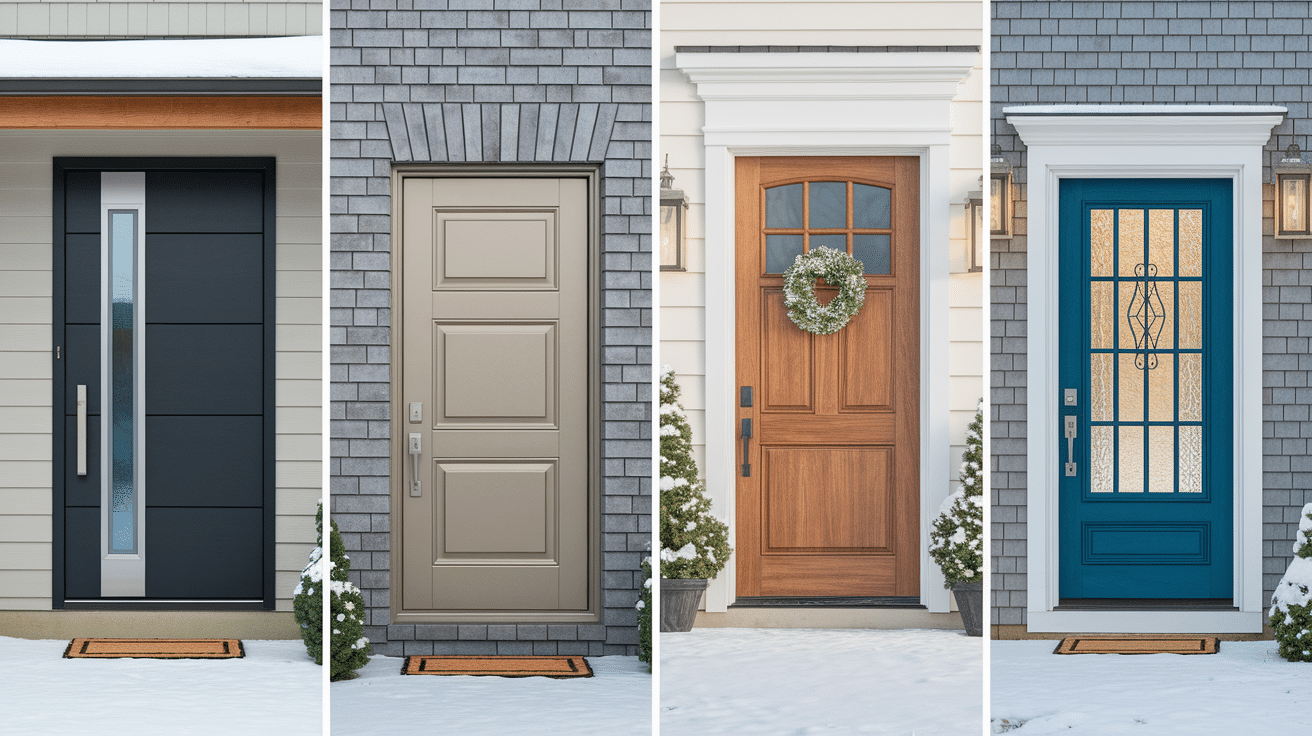Winter winds can turn a front door into a frozen fortress that fights back every morning.
Most homeowners don’t realize their door is the reason their heating bills spike every December. That gap under the door?
It’s like leaving a window cracked open all season long. The cold air seeps in while warm air escapes, forcing the furnace to work overtime.
A good exterior door does more than look nice. It keeps the cold where it belongs – outside. The right door can reduce heating costs, prevent annoying drafts, and make a home feel cozy when temperatures drop.
This guide highlights the best exterior doors that withstand harsh weather conditions. From materials that won’t warp to sealing systems that work, homeowners can find the perfect match for their climate and budget.
Why the Right Exterior Door Matters in Cold Weather
Choosing the right exterior door is essential for maintaining a comfortable indoor temperature during cold weather.
The door’s materials, such as fiberglass, steel, or wood, play a significant role in determining its insulation properties.
Fiberglass and steel doors are particularly effective at resisting heat loss and preventing cold air from seeping in.
Proper sealing around the door also ensures that there are no gaps for drafts to enter, which helps keep the warmth inside.
Insulated doors further improve this by reducing the transfer of heat, making your home more energy-efficient. Selecting a well-insulated, properly sealed exterior door can significantly lower heating costs while improving overall comfort during the cold months.
Key Features of Cold-Weather Exterior Doors
When selecting an exterior door for cold weather, several key features can significantly impact performance. These include insulation, weatherstripping, energy efficiency ratings, and durability. Here are the essential features to look for:
- Insulation: A door with a high R-value (thermal resistance) reduces heat transfer, helping maintain a stable indoor temperature.
- Weatherstripping and Seals: Proper seals and weatherstripping prevent drafts, keeping cold air outside and warm air inside.
- Energy Efficiency Ratings: Look for doors with Energy Star certifications or other energy ratings to ensure effective heat loss reduction and lower energy bills.
- Durability and Maintenance: Choose a door that can withstand extreme cold, resists warping, and requires minimal maintenance to keep its performance intact.
By focusing on these features, you’ll enhance comfort and energy efficiency in your home.
Best Door Materials for Cold Weather
Here’s a breakdown of the best door materials for cold weather, showcasing their insulation properties, durability, and maintenance needs:
| Feature | Fiberglass Doors | Steel Doors | Wood Doors | Composite Doors |
|---|---|---|---|---|
| Insulation | High R-value, excellent at preventing heat transfer | Sound insulation, foam core helps with energy efficiency | Provides insulation but requires treatment for optimal performance | Excellent insulation combines the benefits of multiple materials |
| Durability | High durability, resistant to warping, cracking, and rotting | Strong and durable, resistant to extreme weather conditions | Can be durable, but needs regular maintenance to prevent damage | Highly durable, resists weather damage |
| Maintenance | Low maintenance, requires little care | Moderate maintenance may need occasional touch-ups | High maintenance, needs sealing and painting regularly | Low to moderate maintenance, easy to care for |
| Aesthetic Appeal | Modern look, varied styles | Sleek and contemporary, but can lack warmth | Natural beauty and charm add character to the home | Combines the aesthetics of wood, fiberglass, and steel |
Top Exterior Doors for Cold Weather Protection
When selecting an exterior door for cold weather, it’s essential to choose one that offers superior insulation and durability. Here are the best options to keep your home protected from the harsh winter elements.
1. Fiberglass Doors
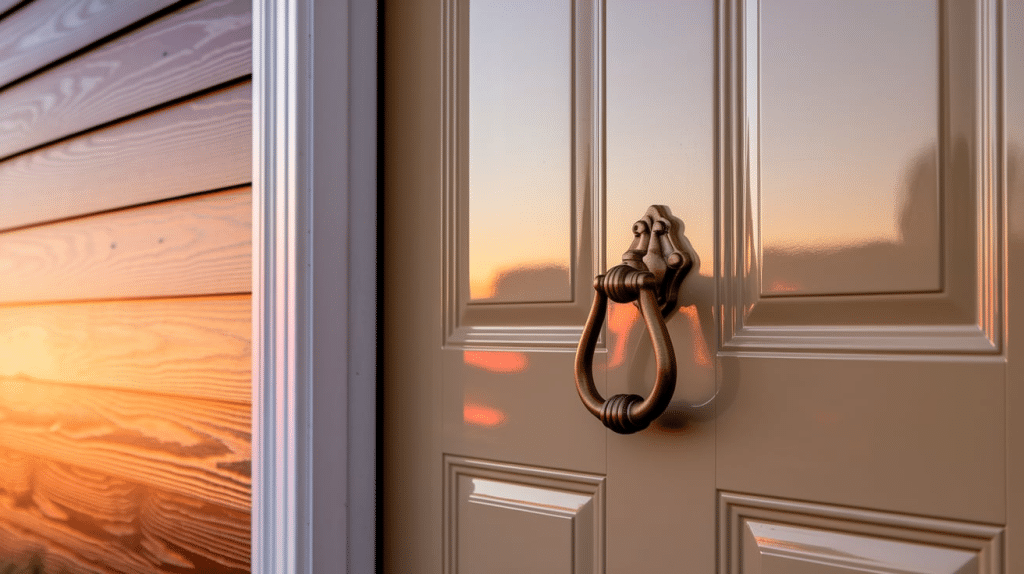
Fiberglass doors are highly regarded for their insulation properties, making them perfect for cold climates. They are resistant to warping, cracking, and rotting, ensuring a long-lasting, low-maintenance solution.
Fiberglass doors are also available in a variety of designs, adding both function and style to your home.
Benefits
- Excellent thermal resistance
- Low maintenance
- Resists weather damage like warping or rotting
2. Steel Doors
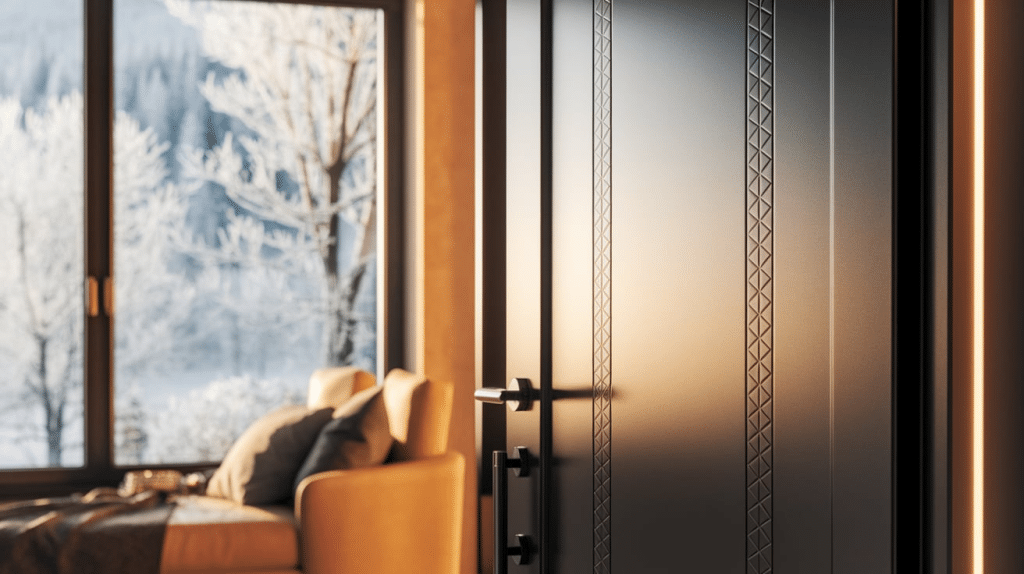
Steel doors offer strength and security while providing excellent insulation. Many steel doors come with a foam core that improves energy efficiency and helps block out the cold.
Their durability makes them ideal for extreme cold temperatures, offering both protection and comfort.
Benefits
- Strong and secure
- High energy efficiency with foam core
- Resists extreme cold and external damage
3. Wood Doors
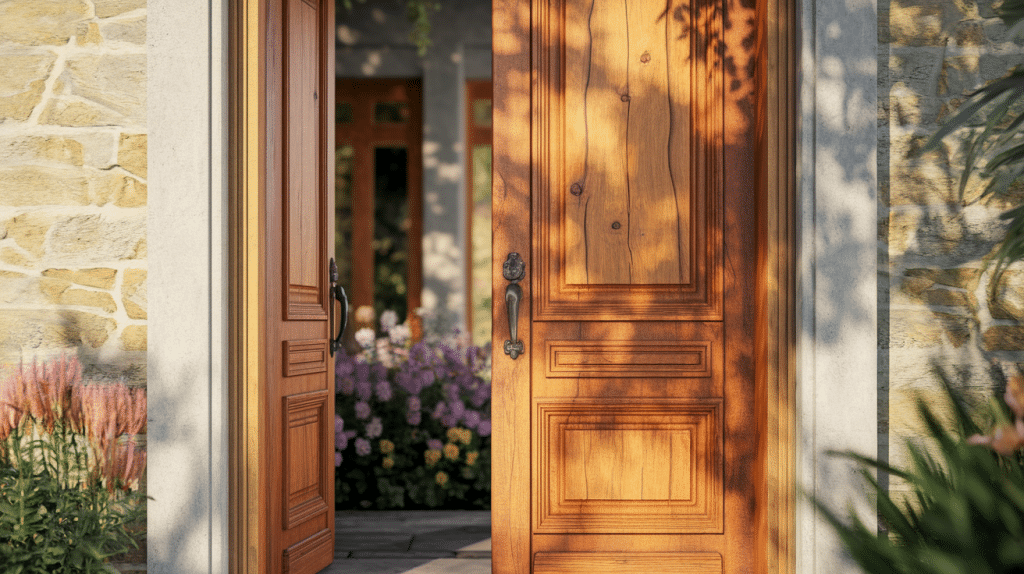
Wood doors offer a natural, classic appeal that complements traditional home designs well. When properly treated, certain types of wood can provide decent insulation, helping to keep your home warm.
However, wood doors require more maintenance than other materials to ensure they last through cold weather.
Benefits
- Natural beauty and aesthetic appeal
- Provides insulation when properly treated
- Adds character to your home
4. Composite Doors
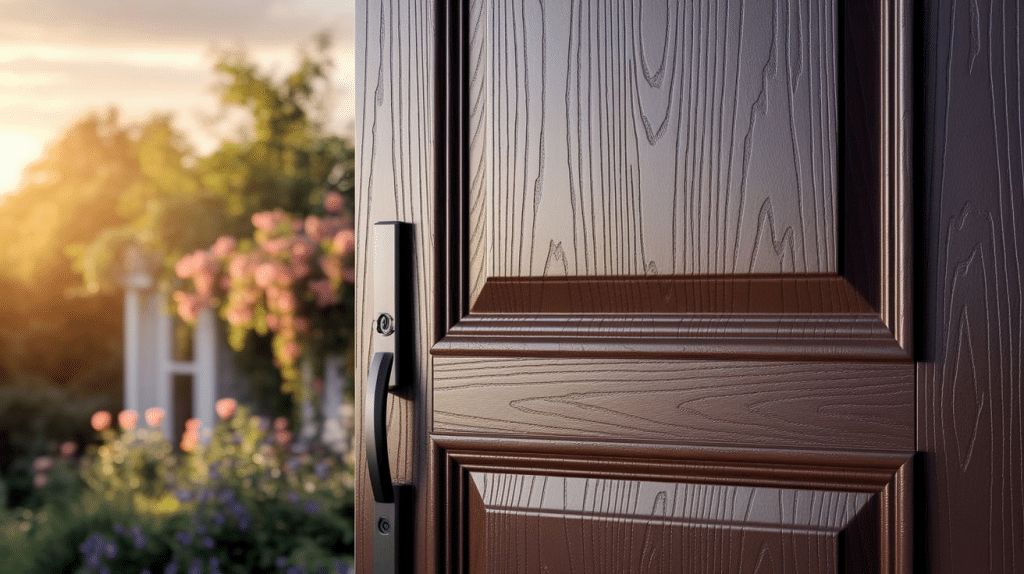
Composite doors are designed to combine the best features of wood, fiberglass, and steel.
They offer high energy efficiency and strength, making them perfect for cold-weather protection. These doors are also resistant to weathering and are low maintenance.
Benefits
- Combining the benefits of multiple materials
- High energy efficiency
- Resists weather damage, low maintenance
Maintain Your Exterior Door for Cold Weather
Maintaining your exterior door is essential to ensure it provides optimal cold-weather protection. Proper cleaning, regular inspections, and potential upgrades will help keep the cold out and improve your home’s energy efficiency.
- Cleaning and Care Tips:
Regularly clean the door surface to prevent the buildup of dirt and debris. Inspect and maintain the seals around the door to prevent drafts from entering. - Inspecting for Damage:
Periodically check for cracks or warping in the door frame. Inspect weatherstripping for signs of wear or damage. - Upgrades and Additions:
Consider adding a storm door for extra insulation and protection. Install additional weatherstripping around the door if necessary for a better seal.
By following these maintenance tips, you can ensure that your exterior door continues to protect your home effectively from cold weather.
Cost Considerations for Cold-Weather Doors
High-performance cold-weather doors often come at a higher initial cost, but they pay off over time through better insulation and lower energy bills.
Here’s a breakdown of key cost considerations:
| Material Type | Average Cost Range (Installed) |
|---|---|
| Steel Door | $500 – $1,400 |
| Fiberglass Door | $800 – $2,000 |
| Composite Door | $1,200 – $2,500 |
| Wood Door | $1,000 – $3,000+ |
Investing more upfront in a high-quality cold-weather door can lead to lasting savings on energy bills and better indoor comfort year-round.
Conclusion
Nobody wants to shiver in their own home because their front door can’t handle winter’s bite.
Choosing the right exterior door isn’t just about looks – it’s about keeping families warm and energy bills manageable. Steel doors offer solid protection without breaking the bank.
The best door depends on local climate, budget, and personal style. However, regardless of the location, investing in high-quality weatherstripping and proper installation ensures that any door performs better.
Winter doesn’t have to mean sky-high heating costs or drafty entryways. The right door creates a barrier that keeps comfort in and cold out.
What’s the biggest challenge with your current front door? Please drop a comment below and check out more home improvement tips on our blog.

